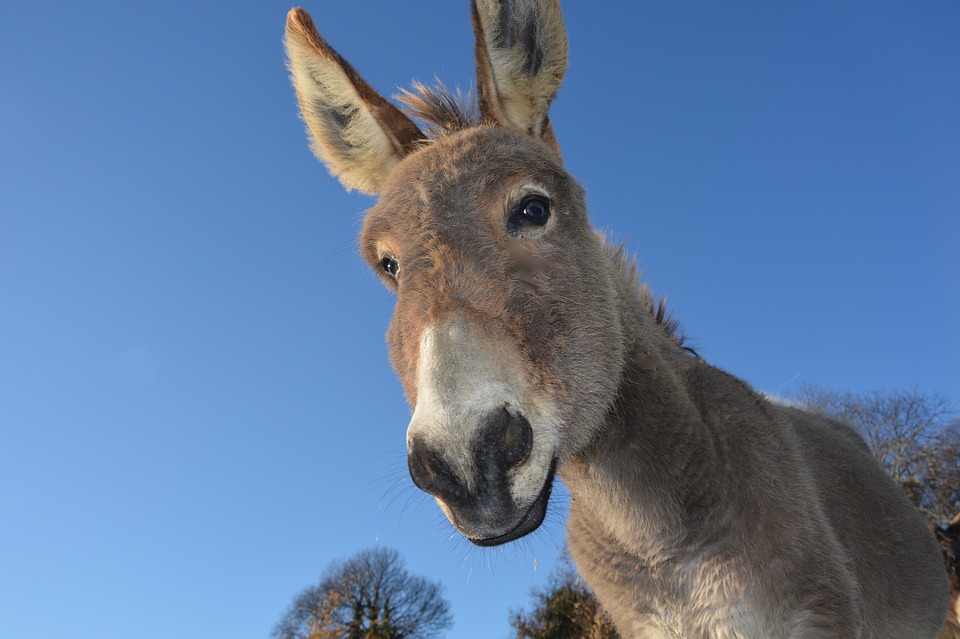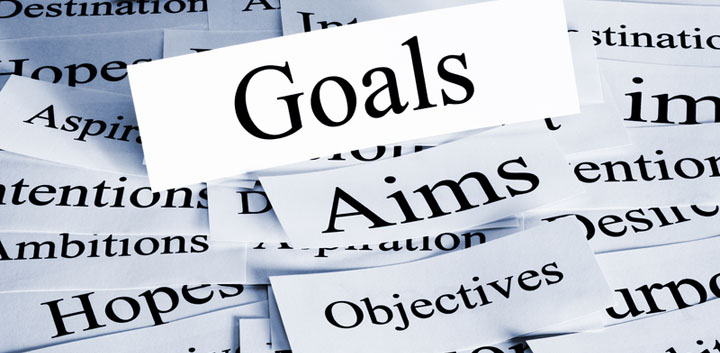
Two Lines That Sum up What I Believe
|
|||

|
|||

|
|||||
Hey! Can it really only be a few days away from 2020? Time to set goals…..again? So soon!
Seriously, I love setting goals for the New Year. It’s fun and optimistic and motivating to me. Gets my juices flowing.
I confess though, inevitably when I look back at my goals from the past year, I wonder why I bothered. I keep records of all my goals and if I glance over a decade, I can clearly see that I probably hit only about 20% of them.
So last year I tried something different. Sure, I still set my very specific financial and personal goals, but I also added a new ingredient that was bang on target and made everything else work.
Let me share.
Here is my process. I call this my Pre-Goal Game Plan—3 steps you need to take before you set your goals for better results.
So…looking back over the past year or more…
1) Think of an area in your life where you would prefer to have been more effective.
You didn’t hit that goal or make those needed improvements. Examples: Learning a new skill, getting your health in hand, getting along with family, making presentations, being more productive, and creating smarter work habits, etc.
2) Now, think of an area of your life where you are really successful; something you already do well and with total confidence.
Examples: An aspect of your job, cooking, a sport, languages, computer skills, etc.
Now, here’s the key that unlocks the goodies.
3) What is the difference between the two?
What do you do in the unsuccessful areas that differ from the activities you excel in? How do you behave? What are you saying to yourself and what do you believe about doing those activities?
What happens when things go wrong? How do you recover? When you know you are off-track or not achieving what you want, how do you respond—what are you thinking and feeling? What do you tell yourself?
So, in other words, what is the difference between the successful recoveries and the not so successful ones?
3) Now, imagine you are ‘mapping over’, i.e. transferring those components of success to areas where you aren’t achieving.
Just visualize yourself doing the desired activity and imagine you are applying all the thoughts, beliefs, and actions from things you do well. How would you be feeling? Behaving? Handling setbacks?
You know you can do it. You already have, just not with this specific thing.
For me, this process gave some astonishing insights.
For a long time I had been good at both preparing and delivering talks and trainings, which came from my 10 years’ experience as a business trainer.
But marketing? Sheesh. I was terrible at it. It required skill sets that I knew I didn’t have.
So I dug into the differences. When preparing for a talk I knew I had to put in a certain amount of work, I knew exactly what that work entailed, and I believed and was certain that it would pay off. I just had to slog away until the preparation was done.
If I found I didn’t like the direction it was taking, or I messed up with something, I would simply start again and persist until it was working for me. I knew I could do it.
For the marketing, on the other hand, if it didn’t work straight away and give me the results I wanted, I would throw up my hands and quit. Do something else. Why bother with this?
Successful marketers persist until they get it right. They adapt and adjust their tactics if they don’t work first time. They know what they need to do and are certain they will get results. Just like I do with my workshops and speech prep.
Conclusion? I need to believe that if I persist with my marketing, hang in there and just do the work, results will come. I also need to study up on it a bit more, and either farm out or learn to do the technical stuff myself, and have confidence that what I’m doing is the right strategy. Then get busy, just do it, as someone said, (Gandhi? Dali Lama? L’Oreal? Wait, Nike!) and not give up at the first obstacle.
You are your own best role model
In Neuro-linguistic Programming (NLP) we call this self-modeling. You know how you can be successful better than anyone else because you’ve done it before. You just need to dig deep into what you do well and compare it to areas you would like to improve.
Think of the implications. If we can model ourselves and de-construct our own successes and failures, we will have a powerful set of tools to achieve whatever we want in life.
For me, this has worked better than goal setting on its own. For my marketing I imagine I’m an experienced marketer who knows and believes in what she is doing. It really helps me to not start second guessing everything I’m doing. I now just get on with it.
But I still like to set goals, just adding in this new information about how to get there. Being more mindful about it.
I urge you to try it out. Just 3 steps. It’s actually fun. I’d love to know what you come up with. Contact me here.
I’ll talk some more next time about a great way to set your goals once you know where you need to change.
Have a great holiday and happy goal prepping!
Margaret
If you would like some personal help with goal setting, or with mapping over your success qualities to your disappointments, just shoot me an email at margaretnashcoach@gmail.com. This is one of my favorite activities so I’d love to get stuck in with you.
Book a session with me now for the New Year and keep my current prices! They are going up in January 2020. The new prices for coaching are already on my website so contact me here margaretnashcoach@gmail.com for current charges that you can keep forever.

I’m lazy. I like things to be easy. If you tell me that in order to get healthy I need to go on an anti-inflammatory diet where I have to give up, well, let’s just say, food, I won’t do it. It’s too hard to stop tomatoes, potatoes, peppers, flour, dairy, sugar, pasta, bread, and everything else that makes life worth living all at once.
I will not do it. Not one bit of it—much less the whole shebang.
I balk like a stubborn mule. Do you have a mule?
Mules don’t like overwhelm.
How my Physical Therapist unwittingly used a Japanese strategy to deal with my mule
I recently engaged a Physical Therapist for a repetitive strain injury. Typically I left it until I couldn’t move my thumb at all and was in agony. He helped a lot with the recalcitrant thumb, but it was something else he showed me that you may find interesting.
We discussed a health problem I had had for several years that caused breathlessness and left me exhausted after even the smallest amount of exercise. I was terribly unfit as a result. And mule-like I didn’t like going 3 times a week to the exercise classes my doctor insisted on.
My PT taught me just one thing—how to breathe. I mean really breathe. Big gulping deep breaths for minutes at a time. All day. Whenever I thought about it. He persuaded me to buy a fitness watch that would beep to remind me to breathe.
Breathe. I can do that. It’s pretty cheap and very easy. The Mule in me didn’t notice.
Well, gentle reader; I’m here to tell you it got me off the couch. After a few weeks I had more energy and was using the treadmill for more than 2 minutes before collapsing. I even got in a swimming pool for the first time in 5 years.
All because of breathing? Yes.
One thoughtful change had worked better than all the expert advice from umpteen doctor/chiropractor/acupuncture/massage therapist appointments pooled together. Oh, and kick in a portable oxygen tank that I never used.
What my PT had done for me, albeit unconsciously, was mimic a Japanese system called Kaizen.
A little background here is interesting
Hang in there with me.
In the years following WW2 the Japanese were exhausted and defeated—their economy destroyed by the devastating effects of war. Japan was in dire straits, yet within 30 years bounced back with one of the strongest economies in the world.
American businessmen traveled to Japan to learn their secret and discovered that the Japanese employed a method called Kaizen to get back on their feet. It involved making itty-bitty changes—not big ones. They tackled their huge problems one tiny step at a time, one week at a time. It worked. Spectacularly well.
Kaizen literally means ‘incremental change, continuous improvement’.
Start with the smallest and practice the easiest.
How does this apply to me, I hear you cry?
Simply this. If you make small, seemingly insignificant, but thoughtful adjustments in your life, slowly but surely everything will start to improve.
What about, if instead of those huge monstrous dietary deprivations, you gave up just one thing for that flipping anti-inflammatory diet? Let’s say sugar. Or pop drinks. Or cereal. Just one thing. Won’t kill you.
You can do that. Even I could.
Overly ambitious goals will trigger overwhelm and defeat. They don’t motivate.
Tiny changes will slip under the radar of the mule-mind.
So, let’s look at your goal or challenge
What is the smallest step you can take this week in relation to it? Can you do it for a week?
Think tiny. Don’t go big. Think easy. Think small.
Ignore advice to ‘Go big or go home!’ ‘Go all in’, or ‘Make a 100% commitment if you’re serious! 98% is not good enough’. Bad advice.
Instead, go for 50% max. More or less willing to give it a go. What have I got to lose. Why not.
Next time you feel overwhelmed with an issue and all your myriad options, try Kaizen. You’ll be amazed. It’s unimpressive, dull, unspectacular, not at all sexy, but will get you results.
Let me know how you get on. I’m genuinely interested.
My approach to coaching is based on this philosophy. So if you want help getting that mule moving, or more info about Kaizen, contact me by replying to this email.
Easy and effortless beats difficult and challenging every time.
Fool that mule.
Cheers!
Margaret
Kaizen Coach and Mule Kicker Extraordinaire
margaretnashcoach.com

I do not want to admit how many come to fruition, how many are totally forgotten, nor how many seem to end up on the stone tablet year in, year out without the slightest discernible progress. I don’t think I’m alone here—apparently losing 10lbs, getting more exercise, and learning a foreign language rank high on this perpetual list of non-achievement for many.
Sigh. Put learning Spanish on that one for me. I live in Mexico so this can safely be said to be important, politically correct, and embarrassing not to have accomplished.
For over a decade it has reared its troublesome and challenging head on my lists of Very Important Goals for any given year. And I think I can honestly admit I understand a conversation in Spanish about as well as I did 10 years ago.
This goal needs life support, resuscitation. I had pretty much given up on it.
Until recently. I happened upon a comment about project management that seemed to apply to this area. It was about being realistic with what you’re not willing to do in any given circumstance where you’re trying to accomplish something. I played around with it, added some steps, got it to work for me and dubbed it the “Let’s Get Real Goal Resuscitation Scheme”.
It’s especially for those annoying goals that stubbornly won’t manifest for some reason. The ones that seem to fizzle somewhere around January 5.
And it’s working! Two months into it, I have actually been complimented on how much my Spanish has improved lately. Please trust me, this has never happened before.
Here it is.
Take a recurring goal that needs life support. Choose your favorite. Fill in the blanks.
So….let’s say it’s learning Spanish. Ahem.
Goal: I want to get better at Spanish, be able to understand conversations, speak and be understood.
I’m NOT willing to:….go to any more classes, employ a tutor (shoot me first), spend two hours a day on it, watch Spanish speaking soaps or cartoons. (I’ve done all of that)
I AM willing to:….do some online course of some sort. Maybe 10 mins a day.
I might just, maybe, POSSIBLY be willing to:…work with a friend, go to a class with a friend (combine it with social occasion), start speaking it every chance I get for practice.
Well, lo and behold, getting real about it, and recognizing what I absolutely am not willing to do any more, kind of broke the impasse I had created.
When we kid ourselves about what we are actually willing to do, we remain stuck. And sometimes we set unrealistic or overly vague goals (to learn Spanish) and become overwhelmed. I had this big picture of attending classes, which cost a fortune and were held 3X a week. And did nothing for my Spanish. I’ve done it before.
After getting real with myself, I discovered an online course that doesn’t make me with froth at the mouth or bleed from the ears after 10 minutes (SynergySpanish.com), and while I don’t listen every day, I am managing it several times a week. It’s working. There is this smidgen of progress. A teeny tiny light at the end of the Spanish-speaking tunnel.
Try this process on your most stubborn goals. Try it on the 10 lbs one (come on, it’s on everybody’s list unless you’re skinny). See what comes up.
Let me know.
(If you want to know more about how to get goal setting to actually work, instead of just depressing you, shoot me an email and we can work together. I have some great processes for kick starting stubborn stuff back into gear.)

I love setting goals. Come New Year’s Eve and I’m sitting with a notebook and cup of tea writing like a crazy person, planning my next year. I think making them is great fun, but I overcomplicate the process and frequently end up with a dog’s dinner of various outrageous and overly ambitious nonsense.
And then they don’t happen. And if I hadn’t written them down so carefully, I wouldn’t remember what they were.
I bet if I asked you what your new year’s resolutions were, you would groan and tell me you don’t like setting goals, because you either forget about them right after making them, or worse, they don’t ever happen even if you do everything right.
You’ve probably already forgotten them.
Goal setting for many conjures up ideas of struggling to figure out what you want in life and making complicated plans you will never stick to for more than a week.
Ugh…fear and loathing.
And reading over your last year’s grand and glorious intentions just doesn’t feel good. Feels kind of like failure.
Thing is, setting goals and figuring out what direction you want to take can work extremely well and can bring things into your life you never thought possible. At least this is what we keep hearing.
After years of complicated processes from Napoleon Hill’s Think and Grow Rich, to SMART goals, to Neuro-linguistic Programming techniques, with random results, I now follow a more intuitive method. Last year I hit nearly every target I set for myself. So I’m not giving up goal setting; it’s my little addiction. Now I’ve learned how to make my addiction work for me.
The secret is to keep it really simple.
Here are 3 questions to get you focused. You don’t really need any more. Keep it simple.
Just answer the questions without overthinking them. Question #3 can be the real game changer. A no brainer for me: social media. What about you?
These questions apply to all areas of life—health, finances, relationships, house and home—any area at all. It can be about material, mundane things, or about lofty spiritual or personal development goals.
Make sure it’s something over which you have some control. You can’t change other people or run their lives.
Watch the magic start to happen.
If this subject is interesting and relevant to you, there is lots more to enjoy in my book, Rebellious Aging: A Self-help Guide for the Old Hippie at Heart, available online in Kindle and paperback; if you live in San Miguel, it’s for sale in the Biblioteca bookstore.
Also, if you live or visit San Miguel, please come for a life coaching session and get personal help in kickstarting 2018!
I’d love to hear how this works for you! Contact me at margaretnashcoach@gmail.com and look out for workshops and practice groups on this and similar life coaching subjects.